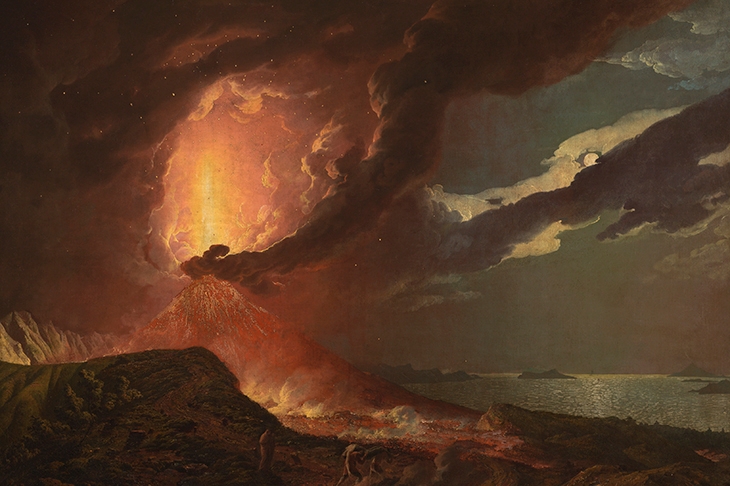‘Playing God is indeed playing with fire,’ observed Ronald Dworkin. ‘But that is what we mortals have done since Prometheus, the patron saint of dangerous discoveries.’
There’s no Prometheus in the RWA’s new exhibition Fire: Flashes to Ashes in British Art 1692–2019, but there are plenty of flames, some dangerous, some not. The third in the Bristol gallery’s trilogy of shows on elemental themes, following The Power of the Sea (2014) and Air (2017), Fire features the most dramatic of the four elements, and the most fun to paint. Artists love playing with fire. It’s a subject that has held audiences in thrall since medieval worshippers were kept on the edge of their pews by ‘Doom’ paintings warning of the hellfire awaiting them if they fell asleep during the sermon.
Sadly most of those went up in smoke during the Reformation, and British audiences had to wait for the Dutch tenebrist Godfried Schalcken to cross the Channel in the 1690s and relight our extinguished fire-painting tradition with his ‘Boy Blowing on a Firebrand to Light a Candle’ (c.1692–98), the picture that opens this show. In the 18th century Joseph Wright of Derby took up Schalcken’s torch and applied it first to candlelit interiors, then to forges and furnaces and eventually to volcanoes in more than 30 paintings of Vesuvius erupting (a sight he never witnessed), one of which is a highlight of the exhibition.
Wright’s volcanoes sold like hot cakes to an 18th-century audience hungry for a dose of the ‘delightful horror’ identified by Edmund Burke as a key ingredient of the sublime. If the fires of hell were out, then the pillars of flame, columns of smoke and showers of sparks thrown up by a forge of Vulcan going hammer and tongs were the next best thing.








Comments
Join the debate for just £1 a month
Be part of the conversation with other Spectator readers by getting your first three months for £3.
UNLOCK ACCESS Just £1 a monthAlready a subscriber? Log in